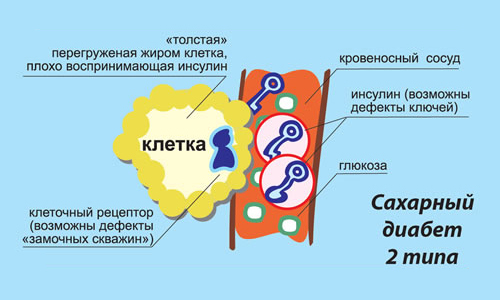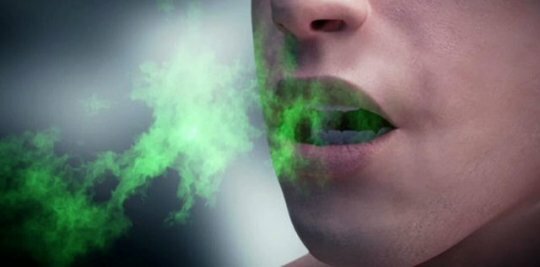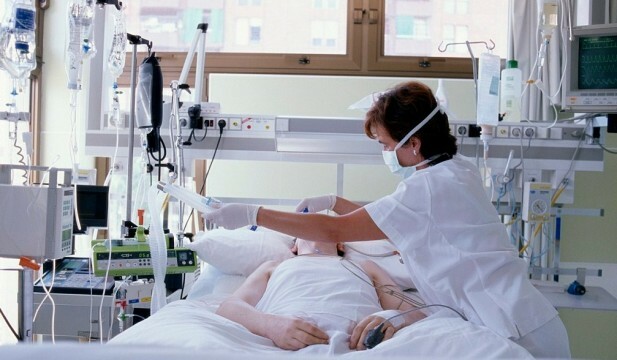Diabetes is one of the most common diseases of the hormonal system. There are certain signs that you can diagnose diabetes yourself, but the most accurate diagnosis can be made by an endocrinologist.

Description of the disease
Diabetes is a disease of the hormonal system. All the foods and drinks we consume contain carbohydrates. These carbohydrates in the form of glucose enter the blood. For the processing of glucose, a hormone insulin is produced - it breaks down glucose. When the production of insulin is insufficient, the concentration of glucose in the blood constantly increases.
Such an increase without countermeasures can lead to edema of the legs, a heart attack, and in especially neglected cases develops a glycemic or diabetic coma. Sometimes only after this case a person learns about the presence of diabetes.
Diabetes is divided into several types. The first type more often disturbs young people up to twenty-five years old, who do not suffer from overweight. Treatment of such a disease requires constant injections of insulin.
The second type is more common in the climacteric period, in women and men after forty, especially in those who are overweight. In type 2 diabetes, insulin injections are not required.
Symptoms
Symptoms of type 2 diabetes develop slowly over several years. A person feels constantly tired, occasional scratches and cuts heal for a long time, vision loses concentration, memory dissipates.

Symptoms of type 2 diabetes are the following:
- Increased fatigue, decreased concentration and blurred vision;
- Memory impairment;
- Poor condition of the skin - develop fungi, scratches heal very long;
- A person experiences severe thirst, drinks a lot of water;
- In the legs, a tingling sensation is felt, limbs quickly swell, hurt during running and walking;
- Women develop thrush, which is difficult to treat and quickly returns after a course of treatment;
- Sharp weight loss for no apparent reason.
More serious signs of type 2 diabetes are sudden and almost complete loss of vision, patients are experiencing strokes or heart attacks, during the treatment of which it turns out that the cause was diabetes.
Increased thirst and polyuria
Polyuria is a frequent urge to urinate. With increased sugar in the blood, the body tries to get rid of large concentrations by excretion in the urine. But if too much sugar is contained in the urine, the kidneys can not miss it, so a lot of urine is one of the first signals in diabetes.
To produce a large amount of urine, the body needs a lot of fluid. For this reason, the second type is characterized by a strong thirst throughout the day and urination at night.
Odor of Acetone
Many people with type 2 diabetes feel the odor of acetone on breathing. This is because the cells can not absorb glucose and begin to feed on fat cells that are stored in the body. During the cleavage of fats, ketone compounds and, in particular, acetone are released. When the concentration of these compounds is too high, they also enter the exhaled air.

The rise of such bodies is also found in the blood. They change the acidity of blood and plasma, which causes drowsiness, nausea, lethargy. With excessive concentrations and jumps in the acidity of the blood, ketoacidosis sets in. It is fraught with the development of coma.
In the case of type 2 diabetes, patients are often prescribed low-carb diets. Moreover, even if the concentration of ketone bodies in tissues and blood rises, the acidity of the blood does not change and the patient feels satisfactory. But with this diet can get rid of excess fatty layer.
Increased appetite
Increased appetite and thirst are the most common symptoms of type 2 diabetes. They are dangerous because they are similar to the symptoms of many other diseases.
Because of the lack of glucose in the cells, the brain receives a signal about the fasting of the body and awakens the appetite. But eaten carbohydrates still do not get into the cells, because insulin does not process them. It turns out a vicious circle in which a person constantly eats, drinks water, but feels hunger and grows thin.
Skin problems
Thrush and fungi develop on type 2 diabetes especially actively. Excess glucose is not only in the blood, but in all tissues and body fluids. When certain concentrations are reached, it can stand out with sweat from the sweat glands of the skin.
Fungi and microorganisms feed on carbohydrate medium, especially reproduction of fungal colonies in a moist carbohydrate medium, hence their active development on the surface of the skin and mucous membranes. With a decrease in blood sugar levels, it is much easier to remove fungus and microbes, even applying only local treatment prescribed by a dermatologist.
Poor healing of
wounds When the glucose level in the blood rises, it acts toxic on all the walls of cells and vessels that come into contact with blood. The process of wound healing is a complex mechanism that also includes the division of healthy cells as one of the stages.
Because the cells experience toxic effects, fission processes slow down, and, accordingly, wound healing also slows down. In addition, the abundance of fungi and microorganisms on the surface of the skin with sweetened sweat does not promote rapid healing, but, on the contrary, only affects the skin. In women with type 2 diabetes, the skin ages faster than without it.
Differences of the first and second types of
Diabetes of the first type develops very quickly, literally for several days. With the development of type 2 diabetes, the symptoms gradually increase.
The person begins to complain of fast fatigue even after a full sleep, drowsiness persists throughout the day. Then there is a strong thirst - for its quenching is not enough and three liters of water a day.
Unfortunately, in most cases, diabetes is diagnosed already when the patient enters the hospital with complications, and it turns out that they are provoked by a high level of glucose in body fluids.
Sometimes the disease is diagnosed before, when the patient himself goes to a polyclinic with certain complaints and gives a blood test, which shows the disease. For diagnosis, blood is usually given for glucose and C-peptide.
Therapeutic diet of
Patients with this disease, regardless of type, are prescribed a low-carb diet. Its compliance will help to avoid exacerbations, and also reduce the number of injections of insulin, or the dosage of the drug. The condition is improving already in the first days.
The basis of the diet is protein nutrition. Of course, it is impossible to exclude carbohydrates completely from the diet, but their quantity should be limited. By the way, the percentage of proteins, carbohydrates and fats in the diet is set by the doctor when prescribing a diet, depending on the indications of the tests and the degree of the disease.
From the diet of the patient should be excluded: bakery products, bananas, rice porridge, pasta, vermicelli, sugar, confectionery, honey, potatoes.
Instead of sugar, sugar substitutes are used, and in large shops there are separate stands with diabetic products that are made without sugar, but have a pleasant and sweet taste, indistinguishable from products with sugar.
Conclusion
Symptomatic of diabetes is insidious in that it is similar to many other diseases. But whatever may be the result of malaise, thirst and frequent urge to urinate, it is better to pay attention to changes in the body immediately, until serious complications have occurred.





